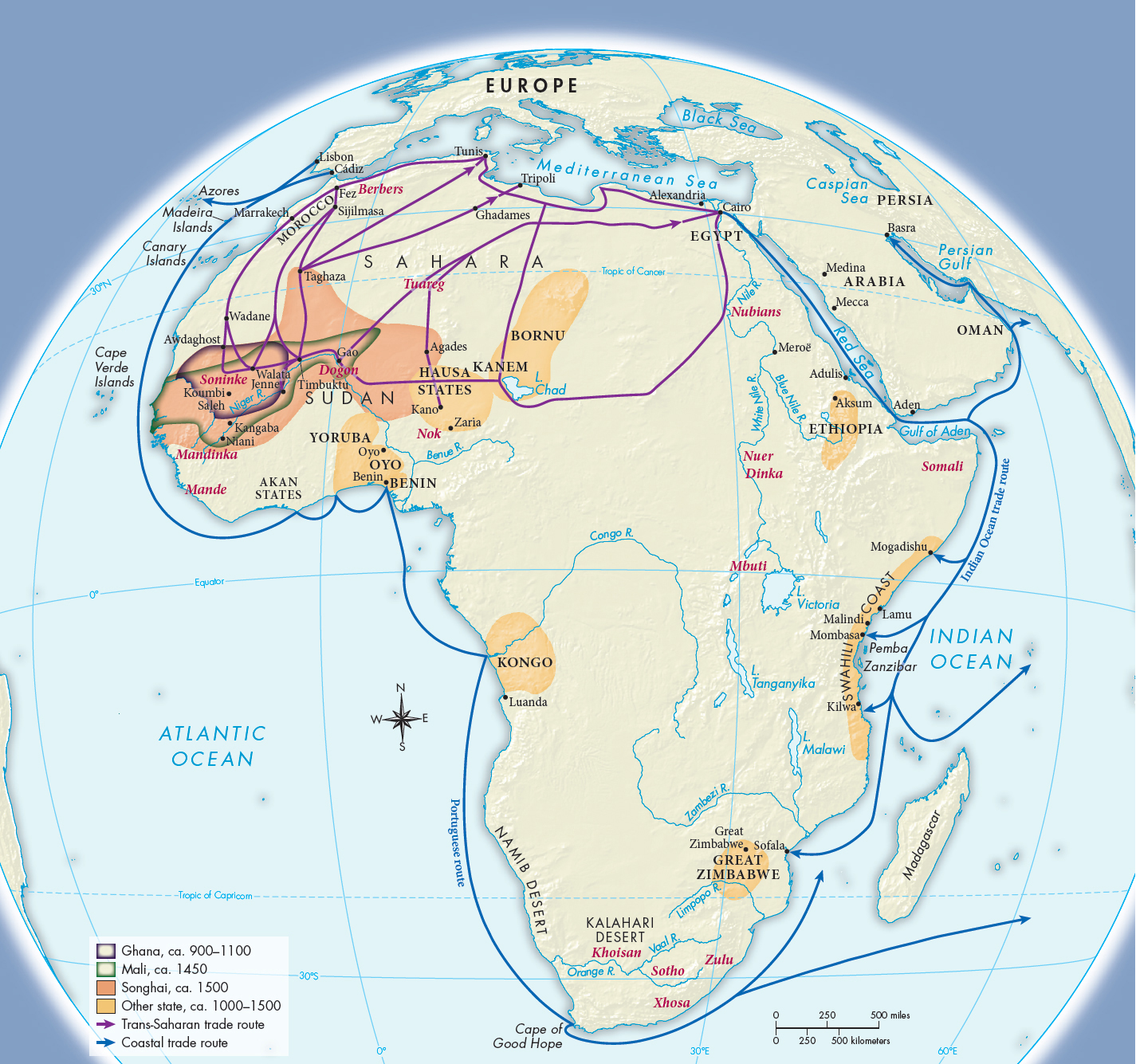The Berbers of North Africa
Sometime in the fifth century C.E. the North African Berbers fashioned a saddle for use on the camel. The saddle gave the Berbers and later the region’s Arabian inhabitants maneuverability on the animal and thus a powerful political and military advantage: they came to dominate the desert and to create lucrative routes across it. The Berbers determined who could enter the desert, and they extracted large sums of protection money from merchant caravans in exchange for a safe trip.
Between 700 C.E. and 900 C.E. the Berbers developed a network of caravan routes between the Mediterranean coast and the Sudan (see Map 10.2). Ibn Battuta, an Arab traveler in the fourteenth century, when the trade was at its height, left one of the best descriptions of the trans-Saharan traffic. (See “Individuals in Society: Ibn Battuta.”)

MAP 10.2African Kingdoms and Trade, ca. 800–1500Throughout world history powerful kingdoms have generally been closely connected to far-flung trade networks.> MAPPING THE PASTANALYZING THE MAP: Which kingdoms, empires, and city-states were linked to the trans-Saharan trade network? Which were connected to the Indian Ocean trade network? To the Portuguese route?CONNECTIONS: How were the kingdoms, empires, and city-states shown on this map shaped by their proximity to trade routes?
Nomadic raiders, the Tuareg (TWAH-rehg), posed a serious threat to trans-Saharan traders. The Tuareg were Berbers who lived in the desert uplands and preyed on the caravans as a way of life. To avoid being victimized, merchants made safe-conduct agreements with them and selected guides from among them. Large numbers of merchants crossed the desert together to discourage attack; caravans of twelve thousand camels were reported in the fourteenth century.
Berber merchants from North Africa controlled the caravan trade that carried dates, salt from the Saharan salt mines, and some manufactured goods — silk and cotton cloth, beads, mirrors — to the Sudan. These products were exchanged for the much-coveted commodities of the West African savanna — gold, ivory, gum, kola nuts (eaten as a stimulant), and enslaved West African men and women who were sold to Muslim slave markets in Morocco, Algiers, Tripoli, and Cairo.
